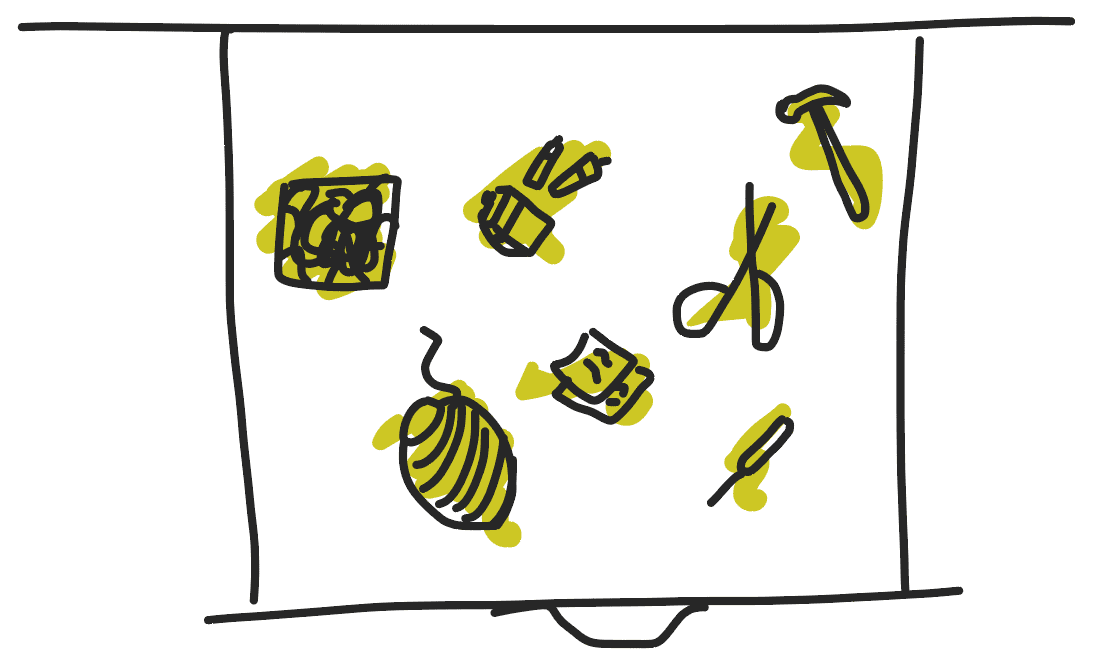Junk drawers as creative fuel
Where Do Designs Come From?
Monday, March 13, 2023
If you’re like me, answers to design questions don’t always appear from thin air with a *poof.*
In our work at Territory, we’re constantly facing-down unique challenges with our clients and I’m always on the hunt for new problem-solving tricks to try. Actually, I have a trick of my own to share with you. A trick that I learned many years ago and use every day.
Once upon a time…
In a low-shag, goldenrod, and avocado-toned land, where kids would grow curious and feral, there was a place of power. Let’s call it a throne. A throne because, well, it was my mother’s kitchen seat.
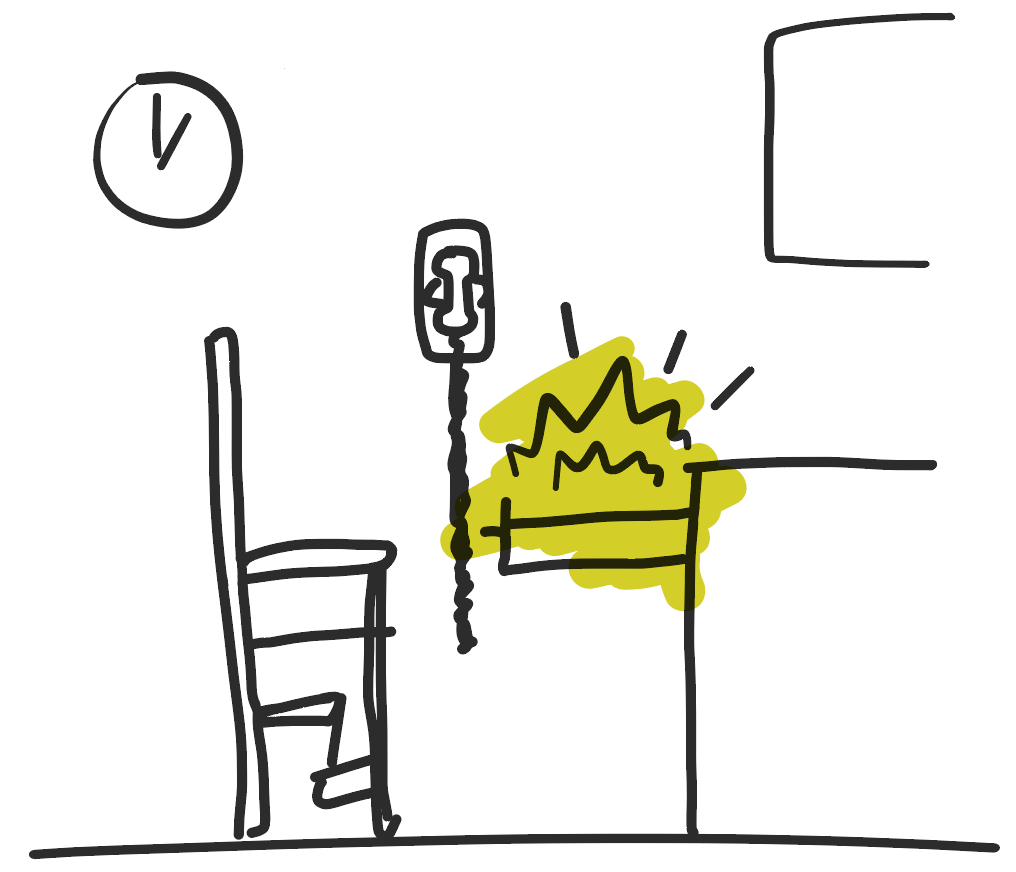
While seated there she had ready access to a war-chest of wonders. Or, as my mother indifferently called it, the “Junk Drawer.”
This drawer of junk was a catch-all for items of great interest to a young boy stuck inside during blustery Nebraska winters and sweltering summers. I could gain access to the throne when my mom, a physically disabled single mother of three, was tending to any of her many vocations.
I would perch atop the stool and scan the vast contents of that drawer like an old prospector seeking my strike. Batteries, rubber bands, twine, flashlights, twist ties, keys, padlocks, hand tools, random slips of paper containing notes and instructions. Rubbish to the novice eye, perhaps, but it was like staring down upon Smaug’s golden hoard to me.
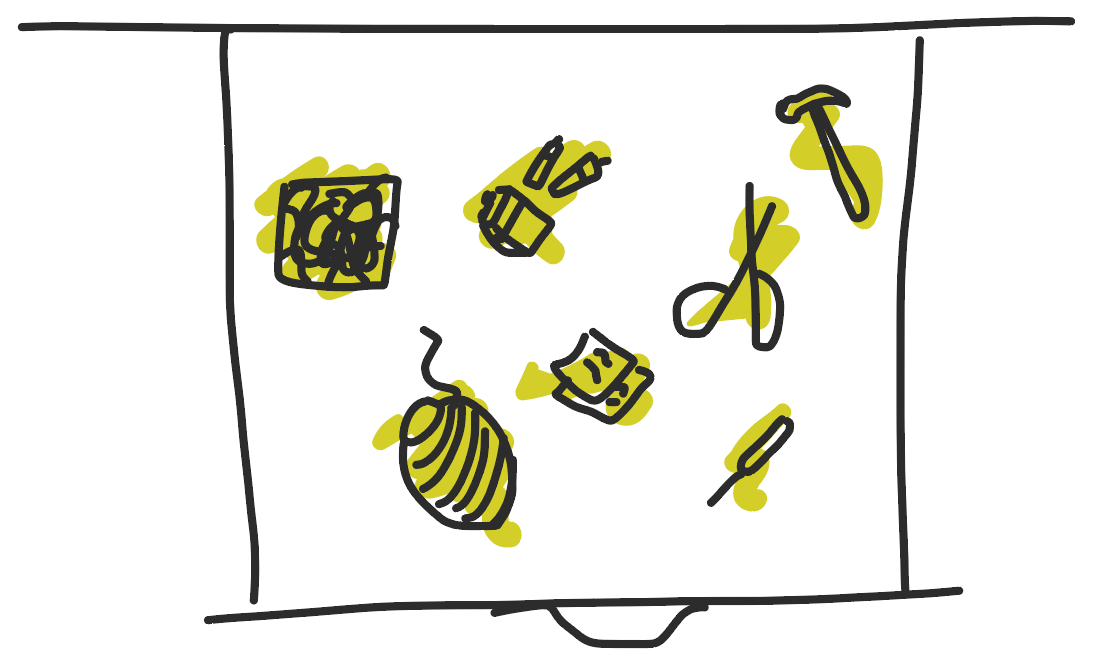
From this drawer came the beginnings of many an indoor day project, including my third grade, “Night of the Twisters,” diorama featuring a motorized toilet paper tube tornado.
Making sense of chaos.
“Can you clean this up for me?”
That sounds familiar, right? The most common remit for a creative professional today is to make sense. Client goals can feel disjointed. Data sources are often in disarray. Your own ideas can seem like a swirling pool with no order. Chaos is abundant and success is defined by your creative agility — the ability to quickly connect ideas and information to form a design notion.
I’ve learned to use junk drawers as a catalyst for this kind of creativity. In addition to the kitchen junk drawer (actually, three drawers) in my own home, I’ve created a similar system for collecting materials, ideas, and other curiosities.
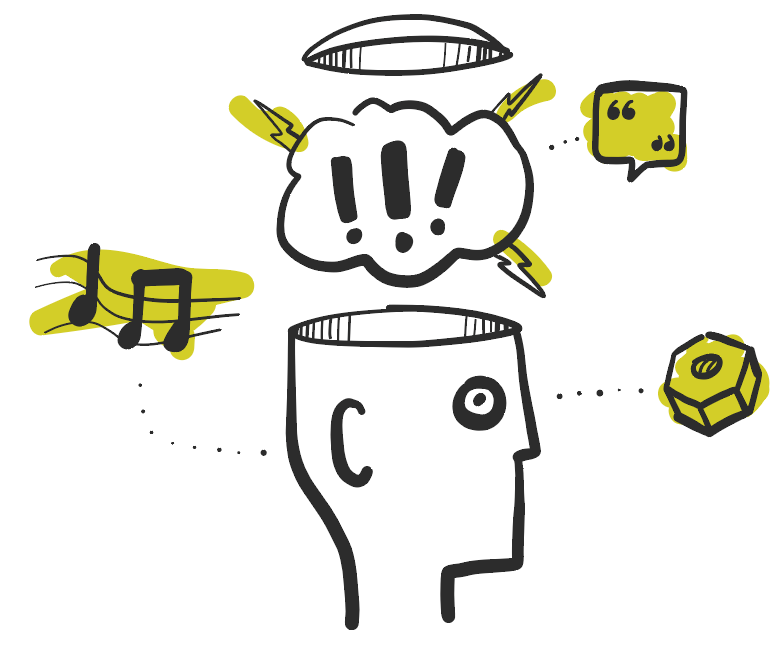
I tend to use boxes. Shoe boxes. Old checkboxes. I also use clear plastic folders for paper and pictures. For digital, I use image folders, making sure to name them intuitively for search and discovery later.
I’m not alone. I know many creative professionals that run somewhere along the curator-to-hoarder spectrum, and that’s my point: this is a tool available for your use, too!
Why junk drawers work
In short, your junk drawer can be used as a talisman to conjure your creative muse. It’s a way for you to step into your right-brain quickly.
There are many ways to use this tool. Here are a few.
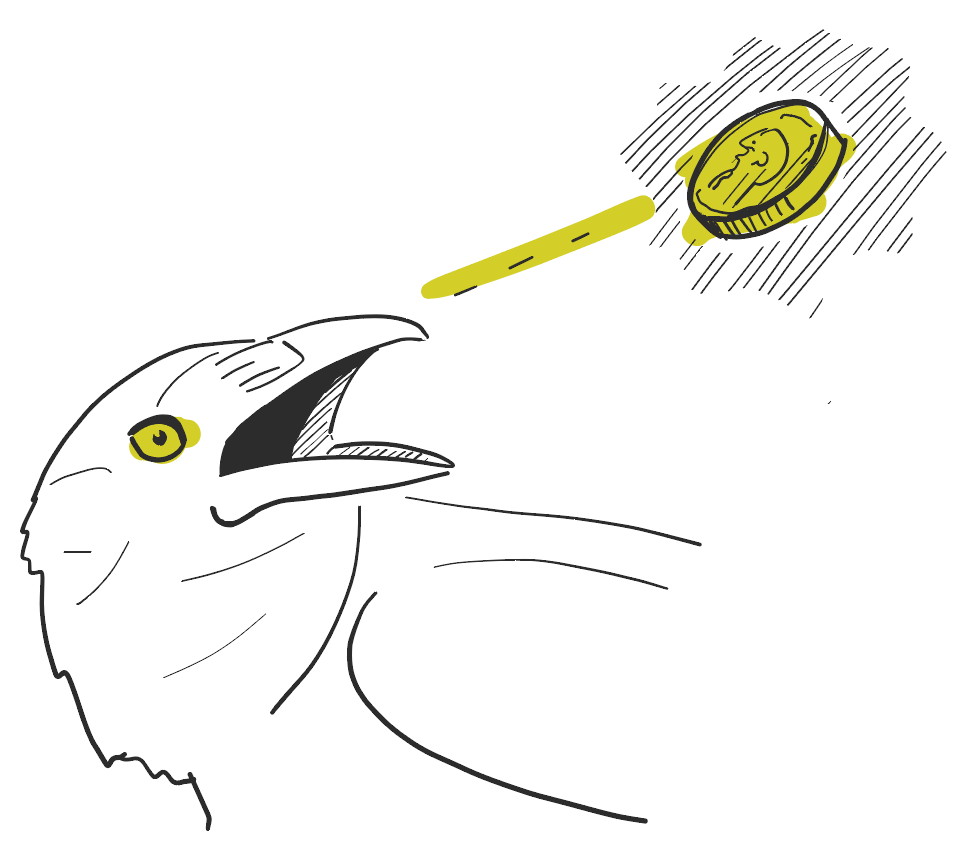
For inspiration — The act of adding to your junk drawer, in itself, is a great way to stretch your mind. Gather thoughts, ideas, and objects. Collect items of interest that you haven’t yet figured a use for. My son and I have dubbed it, “hobo treasure” — the bounty reaped from setting your senses to scan as you walk the earth.
For sparking imagination — Suffering the strain of a blank canvas? Feeling stuck? Blocked? Burnt? Use your junk drawer as a catalyst for ideas. Fill it with articles and artwork from webpages, magazines. Add maps, picture books, and photos. Add whatever’s beautiful and interesting.
For solving design problems — Harnessing your connection-making skills to solve challenges with creativity. I call this connecting-the-dots.
Make your own junk drawer
Start now — A junk drawer can be made of anything. It’s just important that it contains stuff.
Add often — Save interesting and inspirational items in your junk drawer. Let your curiosity drive you to discovery and wonder. Done right, adding items becomes habitual, as opposed to purposeful, activity.
Take the time to open it — When you’re stuck or bored do some junk drawer rifling. It will pay off.
Expand your resources — When it’s full, make another. The natural evolution of a junk drawer is a junk shelf. Keeping things together in a loose organization of type or time will help.
Some tips for success:
- Junk drawers contain varied types of items. You’ll need a way to store both physical items as well as ideas.
- This is a dumping ground. Don’t over-analyze the purpose of an item when adding it — keep your mind open to its possibilities.
- Make it easily accessible. Some drawers are analog and physical while others may live in the cloud.
- Close it up when you’re not using it. Think of it as sealing-in the freshness.
- I know this may be difficult for some, but this is not a place to play-out your organizational obsessions
And remember, the physical location is much less important than the mindset you must take on when using it. Clear your mind. Engage your curiosity. Enter a state of, “What if?” Start to visualize associations.
A note of encouragement
You will get stuck. You’ll feel useless. You’ll quit, and that’s okay. Just take a deep breath. Go for a walk. Call a friend. Start again. You’ve got this.
No matter your level of experience with creativity and idea generation, it doesn’t always come easy. Understanding how to access free-form associative creativity is a learned skill for most of us, but, it can be mastered with technique, time, and practice.
Read on
I’ll close with a couple of reading recommendations for you.
- If you’re looking for an expanded and experiential read on creativity, I’d like to suggest a book from Gordon Mackenzie that was instrumental in my own journey. It’s called, Orbiting the Giant Hairball.
- If you’re interested in learning something about the science behind creativity, I suggest you check out Imagine, by Jonah Lehrer.


